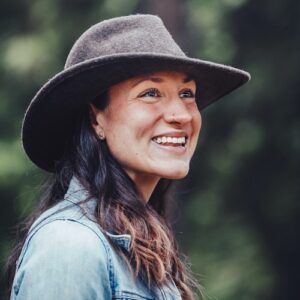Part of the landscape: Klamath-Siskiyou Native Seeds
If you ask Suzie Savoie and Luke Ruediger to name their favorite plants, you’ll be hard-pressed to get an answer.
“That’s kind of like asking somebody to choose their favorite kid,” said Suzie.
Botany isn’t only a source of income for Suzie and Luke, who together own Siskiyou Ecological Services, LLC, an ecological consulting firm, and Klamath-Siskiyou Native Seeds, a purveyor of hand-picked native seeds. It’s a passion.
They live off-grid in a private land holding in the national forest. There, they hike, backpack and forage for seeds, and then, make a living with them. Suzie is co-author of “Native Pollinator Plants for Southern Oregon,” an introductory guide to native pollinator plants in southern Oregon, and Luke is the author of “The Siskiyou Crest: Hikes, History & Ecology,” a hiking and natural history guide to the Siskiyou Mountains of southwest Oregon and northern California. Luke is also the Executive Director of the Applegate Neighborhood Network, which works to sustain the integrity of the environment and human communities in the Applegate Valley and surrounding areas through education, collaboration, community activism, stewardship and science.
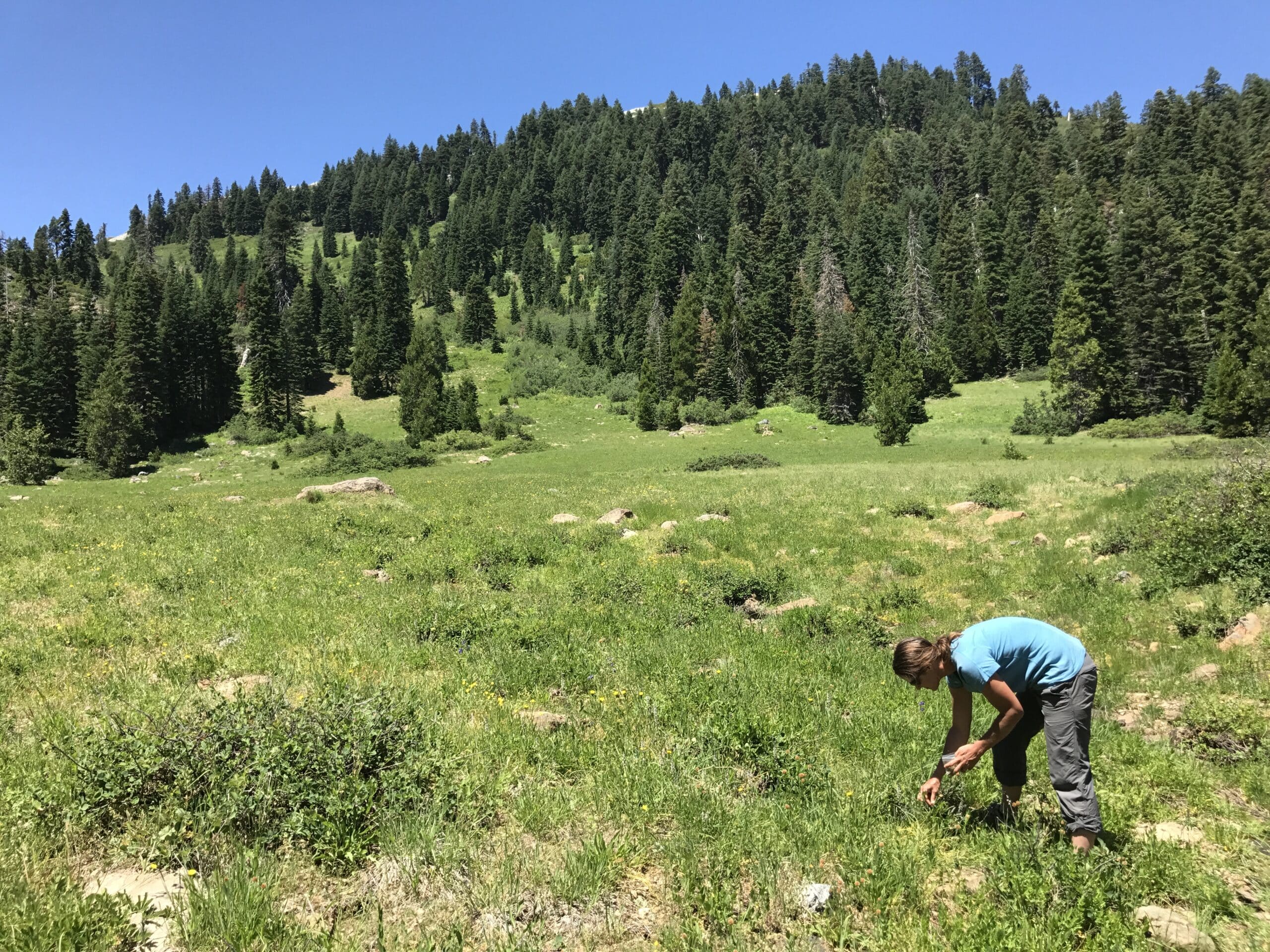
Suzie hand collects seeds in the Klamath-Siskiyou Region.
And every year, when summer arrives, Suzie and Luke’s immense amount of local knowledge and passion benefit The Freshwater Trust (TFT). Between the months of August and October, Suzie and Luke help monitor TFT’s projects in the Rogue River basin. They ensure revegetation projects implemented for compliance are having their intended outcomes.
“They’re outstanding botanists,” said Katelyn Detweiler, Restoration Project Manager with TFT. “They’re not only native plant enthusiasts but deeply passionate ecologists. They’re really skilled at interpreting the landscape and bring a lot of fresh ideas and recommendations to us as project managers.”
Luke and Suzie find the work equally valuable.
“I really like that TFT monitoring work is more comprehensive than other monitoring work,” said Luke. “Instead of just looking at how trees are growing or how much shade is cast on the creek, TFT also does compositional monitoring for herbaceous species and tracks the non-natives that are on site.”
Suzie appreciates the opportunity to protect native pollinator habitat.
“A lot of typical projects are just focused on growing trees, but TFT recognized that we have important milkweed plants and chose not to mow them down,” said Suzie. “They’ve protected this important monarch butterfly habitat within the project.”
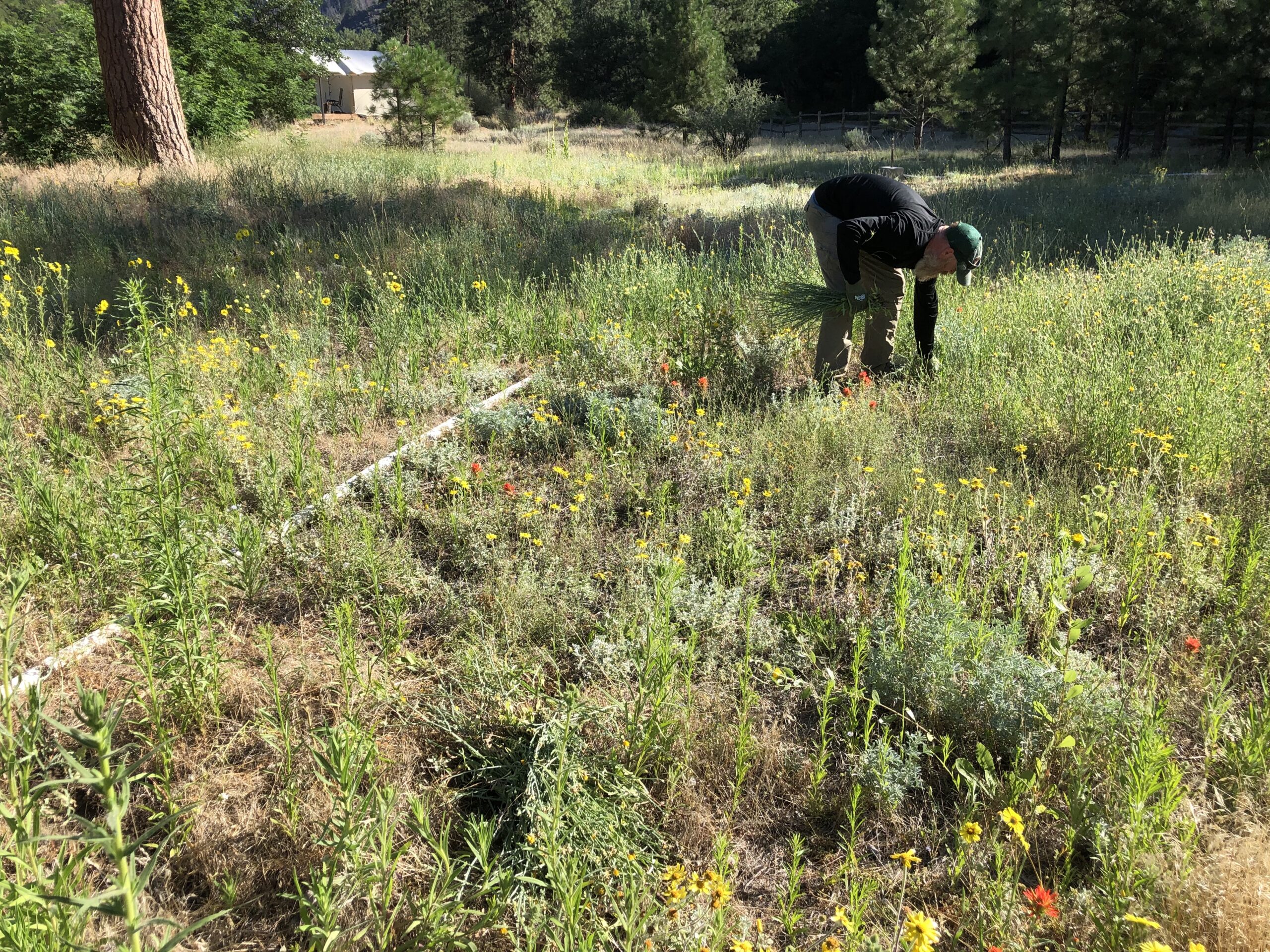
Luke pulls star thistle for a Klamath-Siskiyou Native Seeds project.
They both delight in the opportunity to discover new parts of the place they call home.
“A lot of these projects are on private land, so they’re not areas that I would otherwise see,” said Luke. “As someone who knows and loves this region, I like to put my foot on every little bit I can.”
Having worked with TFT since 2015, Luke and Suzie have had the opportunity to see the impact of the projects year after year, such as the eradication of aggressive invasive species, like jewel weed, from TFT sites.
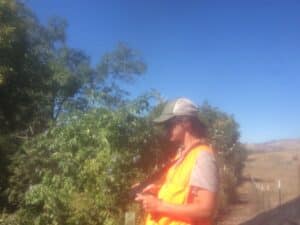
Suzie monitoring a TFT site.
“Sometimes you think these problems are huge and overwhelming, and when you look at them on the landscape scale, they can be,” said Luke. “But there’s a lot of times when just a little investment, such as noxious weed controlling or whatever it might be, can make a huge difference for that site.”
The pair has also witnessed big improvements on the landscape. Though they spend a lot of time in the wilderness and the backcountry, one of their favorite sites is Lone Pine Creek at the Medford airport.
Before TFT’s restoration, the site was degraded, with deep downcutting on the banks and little streamside vegetation. Luke remembers when they first started monitoring, it was a tiny stream, only ankle to knee deep. Last summer, they spotted beaver dams up and down the creek, coho swimming in pools, and herons and jackrabbits along the banks.
“I tried to walk into one of the big pools and quickly realized the creek was over head high,” said Luke. “It really hit me that this stream has been transformed.”
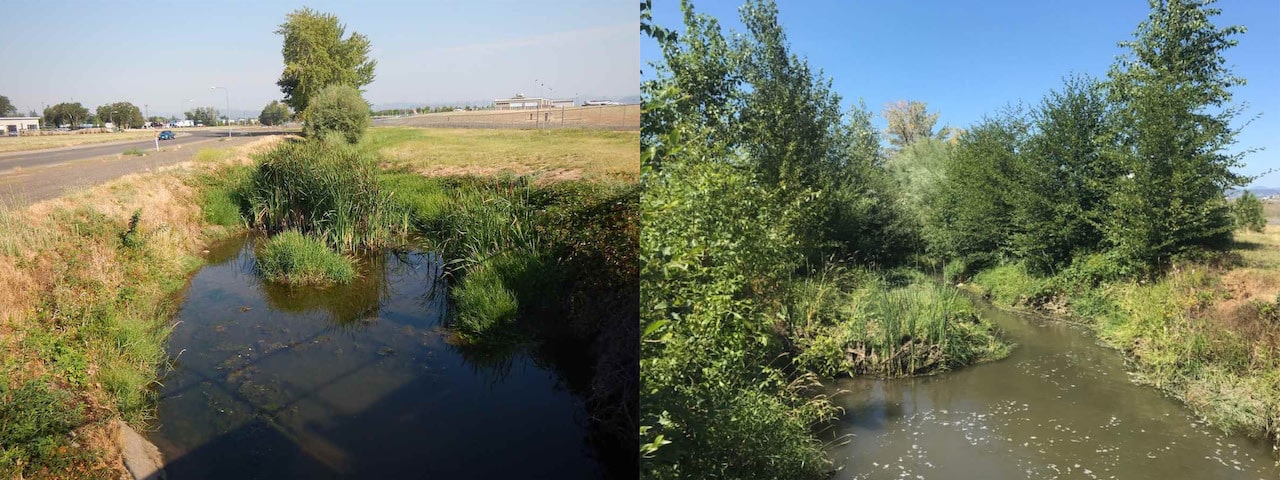
Left: The Lone Pine Creek site pre-project. Right: The Lone Pine Creek site five years after implementation.
Luke, Suzie and Katelyn often spend lunch breaks discussing plant species and philosophizing about different styles of restoration. Sometimes, after discovering an unknown plant on a site, Luke and Suzie will identify the plant and add it to the project’s species list. Once, they unexpectedly found Antelope Bitterbrush, a plant normally found in drier environments, along the Rogue River in a rocky outcropping of TFT’s Weasku Inn site. When Luke and Suzie looked in the plant database, they found that the plant hadn’t been spotted in the area since the early 1900’s.
“They provide a really pure joy and fascination for the natural environment which is contagious,” said Katelyn. “The hope is these sites will become as ecologically functioning as what they experience in the wilderness. With TFT’s help, the land has a fighting chance.”
August 4, 2020#botany #ecology #local partners #native plants #partner profile
Enjoying Streamside?
This is a space of insight and commentary on how people, business, data and technology shape and impact the world of water. Subscribe and stay up-to-date.
Subscribe- Year in Review: 2023 Highlights
By Ben Wyatt - Report: Leveraging Analytics & Funding for Restoration
By Joe Whitworth - Report: Transparency & Transformational Change
By Joe Whitworth - On-the-Ground Action – Made Possible By You
By Haley Walker - A Report Representing Momentum
By Joe Whitworth

